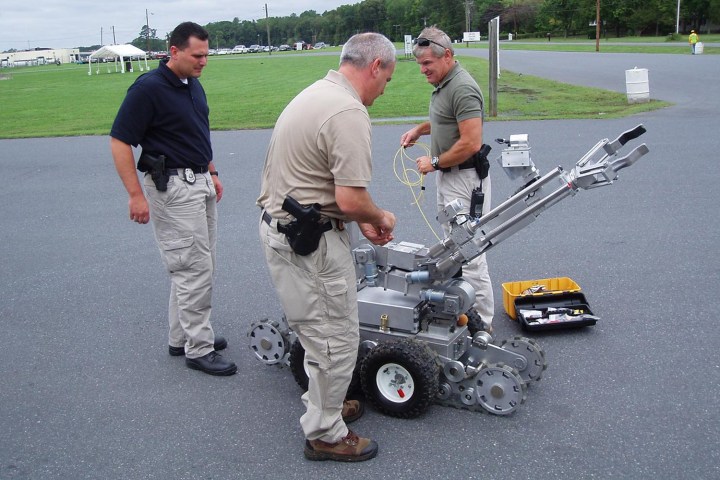
In a statement given on Friday, Police Chief David Brown said that the robot was deployed after several hours of failed negotiations and an exchange of fire at the El Centro College parking structure where the suspect was found. “We saw no other option but to use our bomb robot and place a device on its extension for it to detonate where the suspect was,” said Brown. “Other options would have exposed our officers to great danger. The suspect is deceased as a result of detonating the bomb.”
The suspect has been identified as 25-year-old Micah Johnson, a former Army reservist and Dallas-area resident with no criminal record, according to the Los Angles Times. No other suspects have been publicly identified, but authorities have suggested that two to four shooters were involved in the attack, which killed five police officers and injured seven more. Brown said that during negotiations with the police, Johnson apparently said explicitly that he was motivated by the recent police killings in Minnesota and Louisiana, and wanted to target police officers in retribution, “especially white officers.”
Singer confirmed on Twitter that this is indeed the first reported use of lethal robots by American police, although similar tactics have been deployed in Iraq by the United States military.
Yes, this is 1st use of robot in this way in policing. Marcbot has been ad hoc used this way by troops in Iraq. https://t.co/FfrsgLS2x1
— Peter W. Singer (@peterwsinger) July 8, 2016
Bomb-disposal robots have become an integral tool for American police and military over the last several years, allowing for personnel to resolve many deadly situations without putting additional lives at risk. Many such robots are equipped with small explosives to pre-emptively detonate larger bombs, but it is not clear whether the explosive used in this case was one of those.


